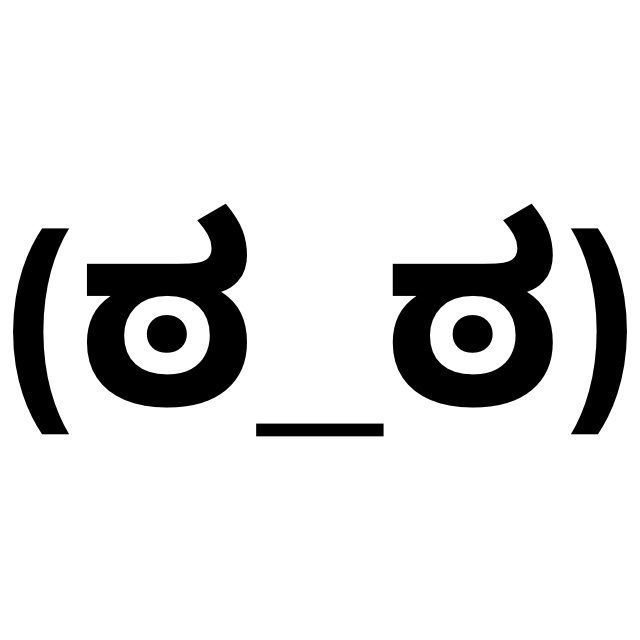Emojis, i.e. colorful pictures for communication on computers, smartphones and the like, are comparatively new. Although they are widespread nowadays and can be used in almost all chat programs and websites, they are not the only way to represent objects, people, animals and, last but not least, emotions.
While in this country the "art of telegraphic drawing" was already being used for simple faces made of brackets, dots and dashes in the 19th century, before the emoji hype in Japan, a special way of using ASCII, written and punctuation marks for pictorial representations developed - Kaomoji. Here you get a small historical outline and examples of Kaomojis.

Chapter in this post:
- 1 What are Kaomojis?
- 2 The Beginnings of the Kaomojis
- 3 The worldwide use of Kaomoji character strings
- 4 examples of the diversity of Kaomoji art
- 5 Easy Kaomojis
- 6 More Complex Kaomojis
- 7 More Kaomojis, some of which show further development
- 8 links and sources on the topic
- 9 My tips & tricks about technology & Apple
- 10 Similar posts
What are kaomojis?
Kaomojis represent the Japanese form of emoticons. They consist of ASCII and Japanese characters and punctuation marks. They are mostly used to express feelings. Unlike the well-known emojis, which depict colorful and stylized faces, objects, people, animals, activities, and the like, kaomojis use the limited possibilities of characters to creatively express different emotions. They are mostly written horizontally and have a wide range of variations that can express anything from joy and deviousness to confusion and anger. Kaomojis are often more complex than western combinations of punctuation marks and brackets, such as E.g. :-) or :-( or :-P etc.
The beginnings of the Kaomoji
Depending on the source, the history of the kaomoji dates back to the late 1970s; here and there, however, the laughing face (^_^) from a message board from 1986 is mentioned as the first online documented Kaomoji. Back then, in the early days of Japanese internet communication, users didn’t have any colorful emojis at their disposal. And the (quick) sharing of pictures wasn't really possible either. Instead, a combination of ASCII characters was used to express feelings in text form. In addition to the laughing face, which in the west was probably expressed with ":)" or ":-)", other kaomojis quickly emerged.
The worldwide usage of kaomoji character strings
With the spread of the internet and the increasing popularity of chat rooms and forums, kaomojis have become increasingly creative and diverse. Japanese netizens began to develop more complex emoticons capable of expressing a wide range of emotions. Due to the digital globalization realized with the Internet and the private communication that became possible with it across national borders and continents, the Kaomojis also came to other centers of Internet communication, such as North America and Europe. In the early 2000s, with the proliferation of personal computers and internet connections, the way was clear for the worldwide use of kaomojis.
Examples of the diversity of Kaomoji art
I still remember coming across Kaomojis in the ICQ chat program in the mid/late 2000s and using them a lot myself. And I'll freely admit that I had a text file on the Windows XP desktop into which I copied many of the character combinations for quick re-use. What were they? I can't remember exactly, but some of the following Kaomoji examples were certainly included:
Simple kaomojis
- (^_^) - A simple, smiling expression
- (T_T) - Tears of Sadness
- (¬_¬) – Skeptical or suspicious look
- (>_>) – Expression of cunning or suspicion
- (ಠ_ಠ) – Expression of disapproval or disinterest
More complex kaomojis
- (づ。◕‿◕。)づ – An affectionate face that shows that you want to hug or cuddle someone
- (╯°□°)╯︵ ┻━┻ – An expression of anger or frustration, depicting someone knocking over a table (called a table flip)
- (´·_·`) – A cute or embarrassed face often used in situations where one feels easily embarrassed or shy
- (๑˃̵ᴗ˂̵)و – An enthusiastic face expressing joy or excitement
- (;一_一) – A face of resignation or regret
More Kaomojis, some of which show further development
- (ノಠ益ಠ)ノ彡┻━┻ - A table flip expressing more rage, usually not really out of anger but used sarcastically (say, to play negative homage to a good pun)
- ┬─┬ノ( º _ ºノ) – Here someone tries in vain to knock over a heavy table, or someone is embarrassed to put the table back up (you see, you can tell whole stories with the pictures)
- (۶ꈨຶꎁꈨຶ )۶ʸᵉᵃʰᵎ – An expressive face depicting excessive enthusiasm with hands raised in the air and rivulets of tears
- (ง'̀-'́)ง – A combative pose showing determination or a willingness to meet a challenge
- ʕ•ᴥ•ʔ – A cute bear face that conveys affection or happiness
Links and sources on the topic
- Wikipedia article on emoticon with categories on history, telegraphic art, Japanese and Korean emoticons, etc. - Read here
- More background and examples of Kaomojis at JobsInJapan.com (English website) – Have a look here
- JapaneseEmoticons.org with history, examples and collections of Japanese text-images (English website) - Browse here









